The Young Persons' Lecture Competition invites students and professionals up to the age of 28 to deliver a short lecture on a materials, minerals, mining, packaging, clay technology and wood science related subject.
Finalists will give a 15 minute presentation on a technical topic of their choice and answered questions from a panel of three judges.
The winner will represent the UK at the 2022 Young Persons' World Lecture Competition final.
Meet the 2022 YPLC UK finalists
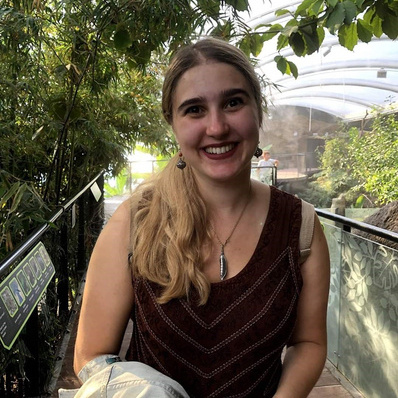
Winner - North East
Lauren Eggleton

Winner - North East
Lauren Eggleton
Lauren is a second year PhD student in the Materials Science and Engineering Department at The University of Sheffield. She developed a passion for research during her Masters in Materials Science and Engineering, which specialised in biomaterials. During this time, she undertook a year in industry at Philips Research UK, working in oral healthcare on whitening and hypersensitivity. Upon returning, she channelled her love for research and nature into her master’s project on snail and slug locomotion in the Natural Materials Group, and has never looked back. Her EPSRC funded PhD focuses on understanding and bridging the gap between structure and function in snail and slug mucus.
Within the department and faculty, she is an active member of the postgraduate research community: supporting fellow students as part of the postgraduate research committee, helping teach undergraduates, and sharing research stories over arts and crafts lunches. Outside of the lab, she is a keen communicator and advocate for inclusion and diversity in STEM subjects, volunteering for outreach programmes and school events at both the local and national level. Through her work with the Bioladies Network and Natural Materials Association, she hopes to inspire people across all ages and backgrounds to discover the scientific wonders found in nature.
In her free time, Lauren enjoys exploring the Peak District, medieval re-enactment and has recently taken up ice skating. Though she can often be found at home curled up with a good book and her two cats.
A sticky situation: The contradictory material properties of snail mucus
Nature has evolved a vast range of 'smart' materials and is currently an untapped resource for novel biomedical and engineering applications. A surprising example is snail mucus. Embodying two contradictory properties, adhesion and lubrication, this material can switch seamlessly between them whenever the functional need arises. But how does it do this and can we replicate it?
In the search to understand these unusual flow properties, our creation of a snail locomotion translation device demonstrates how a more holistic approach to analysing natural materials can reveal more about their true nature. Discovering that like many industrial materials, snail mucus crystallises, but controlling this is via an elegant means of changing its salt concentration. Showing that we can find inspiration for tomorrow's advanced materials everywhere, even at the bottom of our garden.
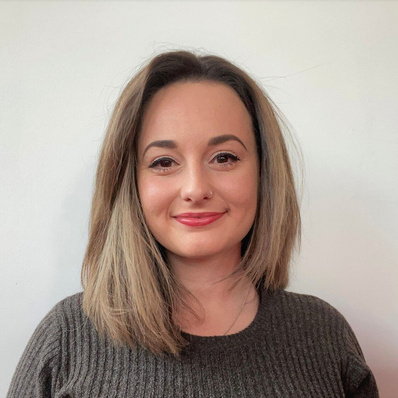
2nd place - Midlands
Anna Tholen

2nd place - Midlands
Anna Tholen
Anna is a final year PhD student studying across the Materials School and the Wolfson School of Mechanical, Electrical and Manufacturing Engineering at Loughborough University. Her PhD, funded by the Engineering and Physical Sciences Research Council and Renishaw Plc, looks to improve the metallurgy of tool steel components when fabricated by laser additive manufacturing.
Prior to her PhD, Anna completed an undergraduate degree in Product Design Engineering at Loughborough University, which involved three years of study and a year in industry at Unilever, procuring injection moulds internationally. As part of her undergraduate degree she completed an individual research project investigating the use of laser surface patterning of bacterial cellulose for peripheral nerve recovery applications, which sparked her interest in laser processing and materials science, ultimately leading to her career in research. Alongside her PhD, Anna is passionate about promoting STEM subjects and proudly takes part in outreach activities within schools and universities to promote engineering to young people of all ages.
Outside of academia, Anna enjoys trail running in the Lake District, taking her dog Basil on long walks, and playing the flute and piccolo.
Effects of local thermal history on H13 tool steel components fabricated by laser powder bed fusion additive manufacturing
Hot work tool steels possess excellent wear resistance due to a microstructure of tempered martensite and hard carbides, making them suitable for manufacturing components that must withstand elevated temperatures for sustained periods of time. Laser powder bed fusion (LPBF) additive manufacturing (AM) is a promising fabrication process for hot work tool steels. The mitigation of subtractive processing means a component does not need to be machined in an annealed state and undergo post process hardening to achieve its characteristics for tooling applications.
However, a consequence of the rapid, cyclical heating and cooling during LPBF AM results in residual stress accumulation in the fabricated part, causing catastrophic defect formation. Hot work tool steel alloys are particularly sensitive due to the compromises in microstructural evolution. This research investigates local microstructural evolution in H13 components fabricated by LPBF AM and its links to localised mechanical properties and susceptibility to crack formation.
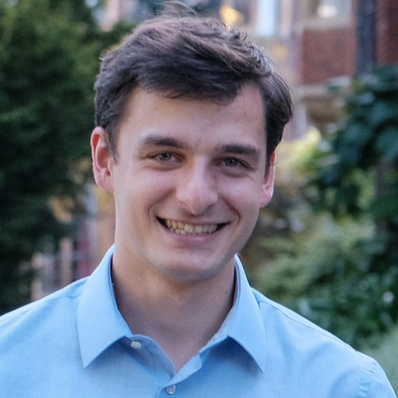
3rd place - South East
Ivan Grega

3rd place - South East
Ivan Grega
Ivan is a first year PhD at the Department of Engineering, University of Cambridge. He completed his undergraduate degree (2021) with a Master’s in Mechanical and Aerospace Engineering, receiving the Sir George Nelson Prize in Applied Mechanics and was awarded the Ashby PhD Scholarship to continue to study in Cambridge. His current research focuses on developing experimental approaches such as self-assembly as well as computational techniques such as deep learning to discover architected materials with unprecedented properties by optimising their topologies. His interest in this topic was ignited during his undergraduate research internship (SURF) at Professor Julia Greer’s lab at Caltech, where he learned that it is possible to make materials with the density of water but the strength and toughness of steel. This experience, together with the industrial perspective gained during his internship at Siemens, motivated his hunt for future technological possibilities of these materials such as reversible energy absorption and integrated functionality. This propelled him to work with Professor Vikram Deshpande on developing scalable self-assembly process for opal crystals which could form the basis of efficient fast-charging batteries.
As a core philosophy, Ivan believes in discussion and dissemination of ideas with colleagues and others. He supervises undergraduate courses in materials and solid mechanics. While not absorbed in research, he likes to tinker with electronics, model planes and fulfils his passion as an amateur glider pilot. He plays ice hockey for Cambridge Blues and enjoys swimming and cycling.
Scalable manufacture of inverse opal metamaterials
Reducing energy consumption is shifting the focus to renewables, and the key intermediary in this energy revolution are batteries. Batteries are reaching their limits in terms of current density. In order to keep increasing the power density, electrodes with high surface-to-volume ratio are needed. Metamaterials with a micro-scale architecture achieve this, and inverse opal metamaterials are prime candidates due to their manufacturing scalability. Here we investigate the mechanics of self-assembly process of dry spherical particles which will serve as a template for scalable inverse opal manufacture. We elucidate the factors which govern the assembly process including the crucial role of gravity. Based on these insights, we design seeding templates which enable the creation of stable close-packed single crystals as well as metastable non-close-packed geometries. These findings open up new possibilities not only for battery electrodes, but also for photonic and structural applications.
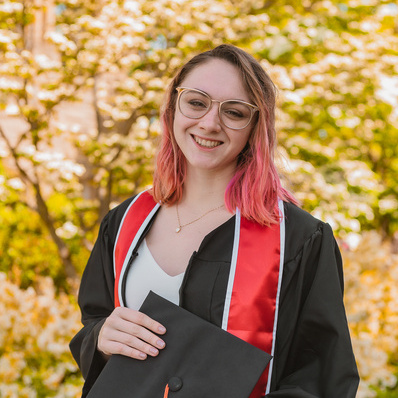
North West & North Wales
Katherine Nelms

North West & North Wales
Katherine Nelms
Kat is a first year international PhD student studying materials science at the University of Manchester. She was awarded the President's Scholar award and studies under Professor Phil Withers. She completed her undergraduate degree in materials engineering at Cornell University with a minor in chemistry. Kat was drawn to materials because it is inherently interdisciplinary; she found her niche in polymer composites and greatly enjoys that composites research combines both mechanics and chemistry. During her undergraduate degree, Kat interned for The Aerospace Corporation in El Segundo, CA working at their Space Materials Laboratory. She also researched under former NASA CTO Mason Pech at Cornell's Space Systems Design Studio. In both positions, Kat's work emphasized composite materials for spacecraft. Kat's passion for space exploration was invigorated by solving challenging problems imposed by the unique environment of space; she then stayed at Cornell for her Master's in Aerospace where she took courses in astrodynamics, control theory, and space systems design.
Outside of research, Kat plays water polo and lifts weights (often to the soundtrack of 80's and 2010's dance music). She also dabbles in odd sports such as pole dancing and trampoline. When not doing sports, she can be found collecting houseplants and bullet journaling. Though she misses the Los Angeles sunshine, Kat has loved travelling the UK during her weekends and deciphering different British accents.
Effect of fiber microstructure on kinking in unidirectional carbon fiber reinforced composites images in real time under axial compression
It is well known that fiber-reinforced polymer composites (FRPs) undergo micro buckling, then catastrophic failure by kinking when loaded under compression. The aim of this project is to use x-ray computed tomography (CT) to investigate kink band initiation and propagation. CT scans of FRPs confirmed that kinking is planar in nature and were used to visualize the damage modes in 3D for the first time. Another key study used in-situ synchrotron radiography at 10kHz to show that complete propagation occurs within 1.2 ms and revealed the previously debated initiation mechanism. Recent efforts focus on fiber movement during compression and confirm that misalignment contributes significantly to kink initiation but does not play a key role in propagation. Moving forward, ultrafast in-situ synchrotron radiography (20-40kHz) will be used to investigate the role fiber waviness on both FRP kink initiation and propagation.
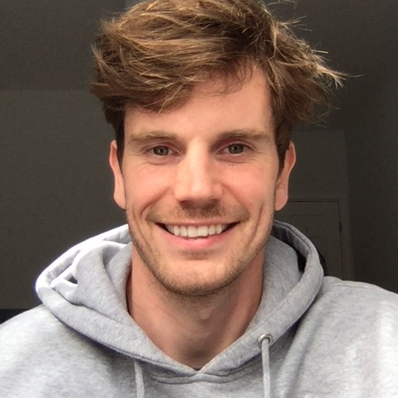
South West & South Wales
Angus Siberry

South West & South Wales
Angus Siberry
Angus is a final year Ph.D. Computational Nuclear Physics student at the University of Bristol. While at Bristol he obtained an MSc in Nuclear Science and Engineering following a BSc in Physics. Angus has been working on nuclear-related research for more than 5 years, spanning magneto-hydrodynamic effects on the corrosion of fusion materials, advanced technology fuels, and for the past three years, he has focussed on the deterioration of spent nuclear fuel (SNF) in aqueous environments. In particular, modelling the radiation emitted from spent nuclear fuel to predict hydrogen gas release and hydrogen peroxide build-up in different waste environments.
He was recently awarded the Roy G. Post Scholarship for work dedicated to nuclear waste management, providing him the opportunity to fly out Phoenix, Arizona to present his work at the Waste Management Symposia 2022. His results are published in multiple highly regarded journals and his mathematical algorithms have been adopted by the National Nuclear Laboratory, UK. The success of his models inspired him to develop his work into an open-source web application, Rad-Dose. A fast easy-to-use tool for any work that requires modelling of radioactive doses received variety of surrounding media from radionuclide containing materials.
Radiation through matter: A geometrical understanding of energy deposition
A new mathematical radiation dosimetry model used to simulate principal geometries has been developed. Using recorded stopping data and either explicitly knowing the radionuclides present in a material or determining averages from a detector, this approach can simulate radiation through any material. This unique approach exposes symmetry in simple geometries to reduce complexity and computation load, which in turn allows for modern programming languages to be utilized and results linked to more computationally demanding models (Finite Element Analysis, Monte Carlo Simulators). The reduced complexity of these models does not suffer from increased inaccuracy to similar more complex simulators (MCNP, GEANT4) allowing one to develop and scale complex models, such as spent nuclear fuel dissolution, with relative ease.
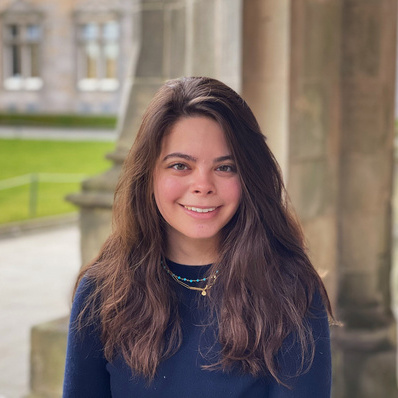
Scotland
Grace Nielson

Scotland
Grace Nielson
Grace is a fifth year MGeol student in the School of Earth and Environmental Science at the University of St Andrews. Her MGeol thesis is focused on the Torridonian Diabaig Formation and it’s implications for the origin of life on land. In Spring 2021 she undertook fieldwork on the Isle of Harris investigating the UHT terranes and rare metal pegmatites of the South Harris Complex, which was generously supported by IOM3 and MIS Trust. As a consequence of this project she began working closely with the Mining Institute of Scotland (MIS) to help engage students and graduates about the future of the mining industry. Working with MIS has fuelled her interest in the net zero transition and what that means for natural resources such as critical metals as well as rekindled her enthusiasm for exploration in the High North and Arctic geopolitics which she has loved reading about since she was a kid.
In her free time, Grace enjoys competitive showjumping, painting, and exploring the beautiful Fife Coast.
The future of the arctic: Mineral resources, geopolitics and climate change
The Arctic is commonly thought of as the final frontier when it comes to human exploration and exploitation of Earth’s natural resources. These resources include oil and natural gas, rare-earth metals, and other mineral resources. The vast majority of these deposits are within Arctic state boundaries, however melting sea ice is creating unprecedented access to international waters. The UN states that exploitation of any natural resource beyond the continental shelf of a nation is prohibited, but as more Arctic sea ice melts this is subject to change and major players in the west are making moves to claim these as well as resources on land. Climate change is at the core of access to Arctic resources and it is already effecting the region. This talk will focus on the natural and mineral resources in the Arctic, claims to these resources, and what effect extraction will have on the Arctic region and beyond.
Timetable
17:00 - Tea & Coffee
17:20 - Welcome & introductions
17:30 - 2022 YPLC final
18:30 - Break
18:45 - 2022 YPLC final
19:45 - Drinks reception & networking
20:15 - Results
21:00 - END

